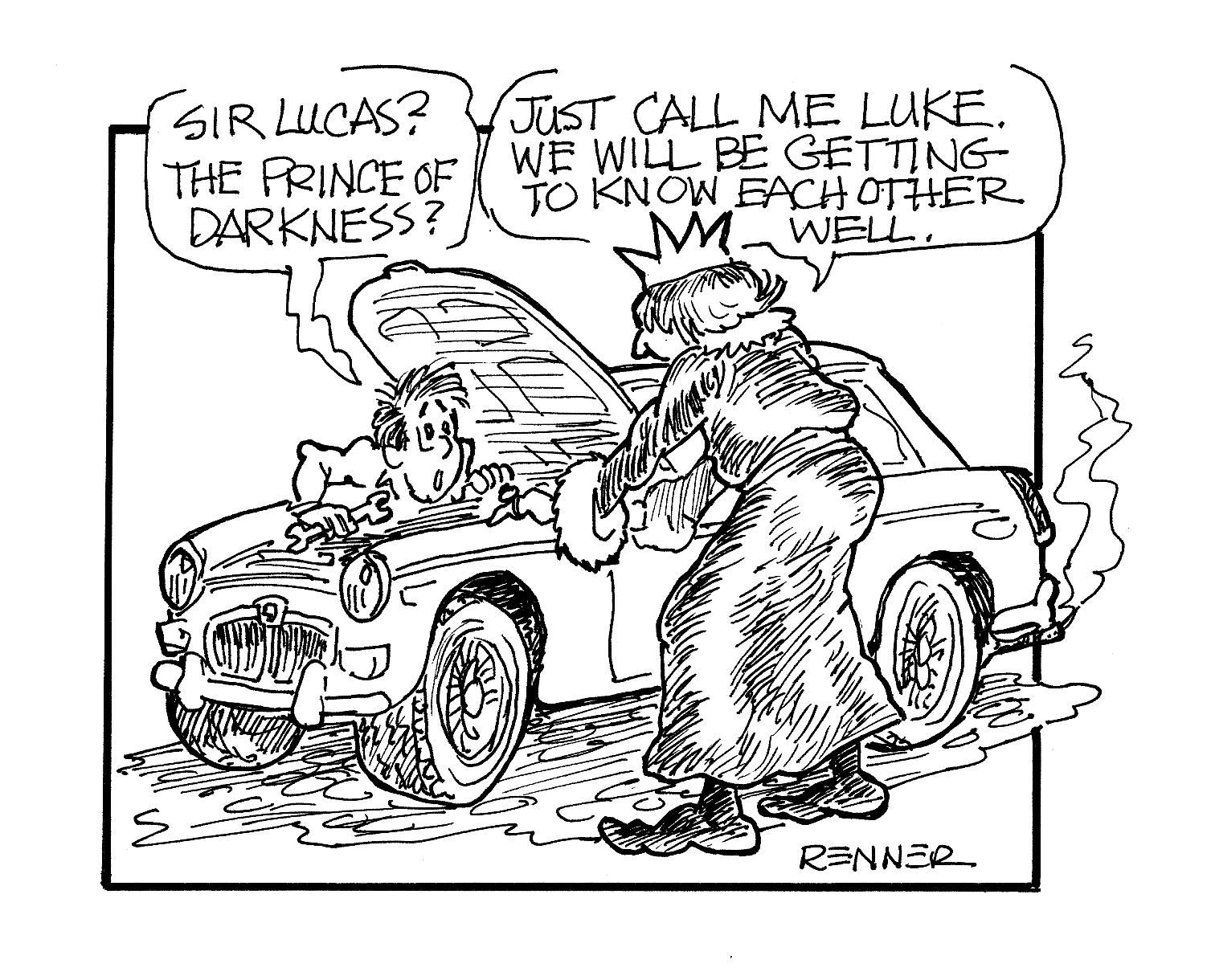This week’s winner is….
Scott Hardy!
LBC 1: Car Capers in Cleveland
Corona Competition entry, week 10
By Scott Hardy
My wife Trish and I are the current car(e)takers of a 1972 MGB that I christened Leicester B. Carlysle III (LBC III for short). Leicester shows every sign of being a stalwart, even reasonably reliable, little British car (notwithstanding the rather unfortunate incident involving gasoline spouting from a disappeared carburetor screw onto a hot exhaust manifold; having survived that, he now travels with a fire extinguisher onboard wherever we travel.) This story, however, concerns the first of Leicester’s predecessors, the little British cars that preceded LBC III in my life. In the interest of technical accuracy, I will mention that even though the body of my late, lamented Volvo 1800S was stamped in England by Pressed Steel (who also did the MGB), by 1966 final assembly had moved from Staffordshire back to Sweden.
LBC 1 came into my life in 1970 when I was a car crazed high school sophomore in Berea, Ohio. My mother drove a 1965 Rambler American 660, with two-tone aqua paint, automatic transmission, and vacuum wipers. It was the prototypical box on wheels, and she hated it. My mother was a stylish, progressive woman, and the Rambler just was not her cup of tea. I was also embarrassed to be driving it, on those too-rare occasions when I could finagle the keys to the car. Sensing an opportunity, I searched through the Plain Dealer classifieds, and finally found something that caught her interest – a 1967 MGB GT. It was owned by an ex-GI who had returned from Germany with it, and it was a tidy little motor: BRG with wire wheels and an Italian Stebro exhaust. My mother loved it, and so did I – figuring that I might finally be noticed by the girls in my school. But like many youthful loves, there was both joy and anguish in our relationship.
While the MG was not technically “mine,” I did inherit the not-inconsiderable job of keeping it on the road. So I bought my first workshop manual, went to Sears for some Craftsman wrenches, and got to work. I quickly learned intimate secrets about SU carbs, so I sprang for a Uni-Syn. So equipped, and with occasional help from MG Motors in Lakewood and a sympathetic independent mechanic, I kept it on the road. But I could not solve the starting problem. Like other MGs, ours had come standard with two six volt batteries. Unlike other MGs, ours was never converted to one 12 volt, and the dual batteries kept dying with alarming regularity. My mother was less than amused at the car consistently failing to get her home from the office; I was not thrilled at having to go with my father and tow the car home (via a dangerously short cable); and my father was generally pissed at having to replace all these 6 volt batteries, each which cost twice as much as a 12 volt would have.
I resolved to solve the problem, so I found myself in familiar territory under the aluminum hood. Anticipating this moment, Lucas engineers had helpfully installed a switch on the starter solenoid, so I could start the car from the engine bay. Over time, I really appreciated their foresight. On this occasion, I held down the button and the engine reluctantly – very reluctantly – turned over. Slowly. And even slower. As I watched, the engine ground to a halt, while the throttle cable went up in smoke!
Convinced that Demons sent by the Prince of Darkness were occupying my Mom’s car, I gave up and went to call the mechanic. His telephone diagnosis proved to be correct. The car was being grounded primarily through the throttle cable, and a simple grounding strap proved to be the cure. And the batteries started lasting longer than the Dunlop tires, which were generally good for a maximum of 10,000 miles. More often 5,000 miles.
My mechanical skill set expanded the longer we had the car, culminating in pulling the engine and transmission not one, not twice, but thrice when replacing the transmission. The MGB GT taught me how to rent tools, browse auto shops, and prowl through junk yards. I do miss the last of those skills. It was such a sense of expedition and discovery to prowl though a weed-choked and mud-soaked salvage yard in search of foreign automotive gold in the form of half crashed, rust ravaged carcasses.
I would like to say that LBC 1 is these days in the hands of a grateful collector, but I’m afraid that would be a lie. After I went off to college, my mother eventually had the local vocational school replace the steel front fenders with fiberglass, hoping that would keep the rust demons at bay. The fender and paint job she received were written up in a nice story she did for the local paper, and the car looked great for a couple of months. However, the fender rust was only one symptom of a far greater cancer, and when the floor mats eventually provided more structural support than the floorboards, she sold the car. I’m sure it went off to one of those salvage yards within a year or two.
The good news is that her replacement for the MG was a new model, the first-generation Honda Accord that came out in 1976. That was a landmark car, marking the first movement of Honda into mainstream automobiles. I really enjoyed driving it – but it taught me absolutely nothing about automobile mechanics!
To read part 2 of this story, Click Here.
